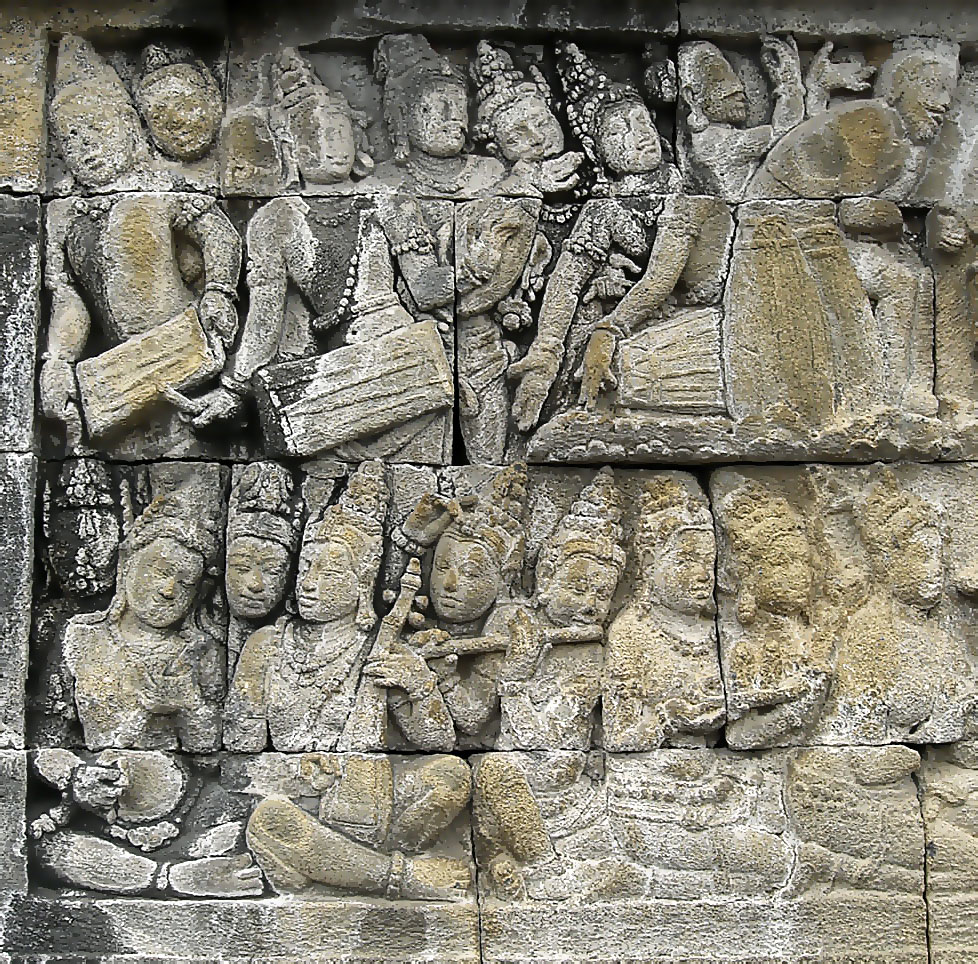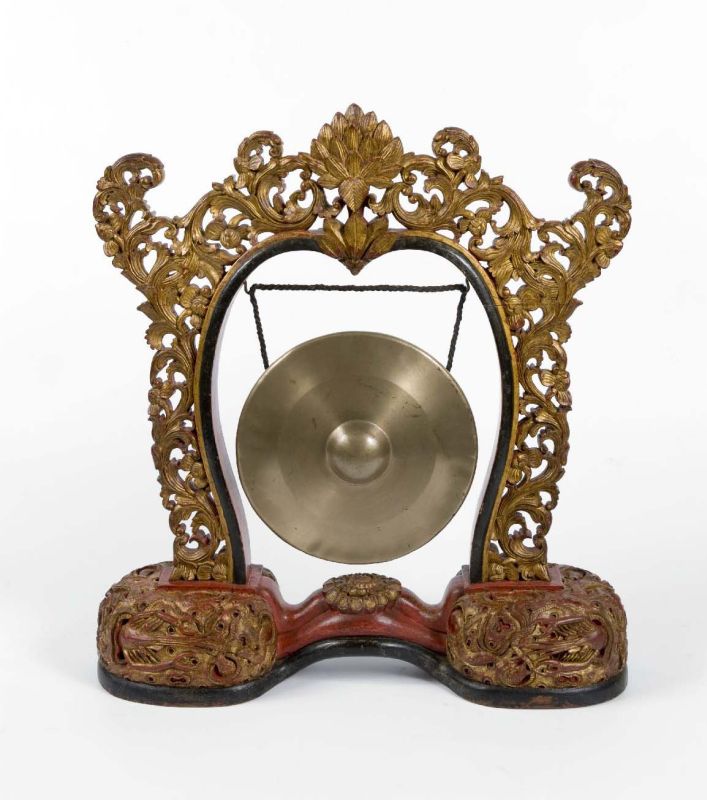|
Gamelan Gambuh
() is an ancient form of Balinese dance-drama. It is accompanied by musicians in a gamelan ''gambuh'' ensemble. History ''Gambuh'' is one of the oldest surviving forms in Balinese performing arts, dating to the late Majapahit era (ca. 15th century) with very little known change since this time. Emiko Susilo writes, "when the dance-dramas of Majapahit came to Bali, they had the new task of ''preserving'' the tradition of a fallen dynasty" (emphasis in original). It also introduced a new element of narrative to Balinese performing arts that influenced other forms of dance-drama on the island, such as '' topeng'' masked dance and '' arja'' opera. For centuries it was supported by patronage at the royal courts of Bali's aristocracy, during which it achieved its greatest heights of sophistication. As the courts fell apart in the bloody wars with the Dutch, this support evaporated and much of the art of ''gambuh'' was lost. Like the many other arts that formerly depended on ro ... [...More Info...] [...Related Items...] OR: [Wikipedia] [Google] [Baidu] |
Gamelan
Gamelan (; ; , ; ) is the traditional musical ensemble, ensemble music of the Javanese people, Javanese, Sundanese people, Sundanese, and Balinese people, Balinese peoples of Indonesia, made up predominantly of percussion instrument, percussive instruments. The most common instruments used are metallophones (played with mallets) and a set of hand-drums called ''kendang'', which keep the beat (music), beat. The ''kemanak'', a banana-shaped idiophone, and the ''gangsa'', another metallophone, are also commonly used gamelan Musical instrument, instruments on Bali. Other notable instruments include xylophones, bamboo flutes (similar to the Indian ''bansuri''), a bowed string instrument called a ''rebab'' (somewhat similar to the ''gadulka'' of Bulgaria), and a zither-like instrument called a ''siter'', used in Javanese gamelan. Additionally, vocalists may be featured, being referred to as ''sindhen'' for females or ''gerong'' for males.Sumarsam (1998)''Introduction to Javanese ... [...More Info...] [...Related Items...] OR: [Wikipedia] [Google] [Baidu] |
Kawi Language
Old Javanese or Kawi is an Austronesian language and the oldest attested phase of the Javanese language. It was natively spoken in the central and eastern part of Java Island, what is now Central Java, Yogyakarta and East Java Provinces, Indonesia. As a literary language, Kawi was used across Java and on the islands of Madura, Bali, and Lombok. History The oldest example written entirely in Ancient Javanese, called the Sukabumi inscription, is dated 25 March 804 AD. This inscription, located in the district of Kepung in the Kediri Regency of East Java, is a copy of the original, dated some 120 years earlier (only this copy has been preserved). Its contents concern the construction of a dam for an irrigation canal near the river Śrī Hariñjing (now shortened to Srinjing). This inscription is the last of its kind to be written using Pallava script; all consequent examples of Old Javanese are written using Kawi script. Development Old Javanese was not static, and its us ... [...More Info...] [...Related Items...] OR: [Wikipedia] [Google] [Baidu] |
Gamelan Gong Kebyar
Gamelan gong kebyar is a style or genre of Balinese gamelan music of Indonesia. ''Kebyar'' means "to flare up or burst open", and refers to the explosive changes in tempo and dynamics characteristic of the style. Gong kebyar music is based on a five-tone scale called ''pelog selisir'' (tones 1, 2, 3, 5, and 6 of the 7-tone pelog scale), and is characterized by brilliant sounds, syncopations, sudden and gradual changes in sound colour, dynamics, tempo and articulation, and complex, complementary interlocking melodic and rhythmic patterns called kotekan. History Gamelan gong kebyar was first documented to exist in North Bali in the early 1900s. The first public performance was in December 1915 at a gamelan gong competition in Jagaraga, North Bali. Following their invasion of the island, Dutch occupiers responded to international criticism by building cultural institutions. They sponsored these competitions until Japanese forces ended their rule in World War II. Rel ... [...More Info...] [...Related Items...] OR: [Wikipedia] [Google] [Baidu] |
Kendang
A ''kendang'' or ''gendang'' (, , , Tausug language, Tausug/Bajau/Maranao language, Maranao: ''gandang'', Buginese language, Bugis: ''gendrang'' and Makassarese language, Makassar: ''gandrang'' or ''ganrang'') is a two-headed drum used by people from the Indonesian Archipelago. The kendang is one of the primary instruments used in the gamelan ensembles of Javanese music, Javanese, Music of Sunda, Sundanese, and Balinese music, Balinese music. It is also used in various Kulintang ensembles in Indonesia, Brunei, Malaysia, Singapore, and the Philippines. It is constructed in a variety of ways by different ethnic groups. It is related to the Indian double-headed mridangam drum. Overview The typical double-sided membrane drums are known throughout Maritime Southeast Asia and India. One of the oldest image of kendang can be found in Candi of Indonesia, ancient temples in Indonesia, especially the ninth century Borobudur and Prambanan temple. Among the Javanese people, Javanese, Sund ... [...More Info...] [...Related Items...] OR: [Wikipedia] [Google] [Baidu] |
Kajar (instrument)
{{disambig ...
Qajar Iran was an Iranian empire ruled by the Qajar dynasty. There are some derived meanings: * Qajar dynasty in Iran ** Qajar art * Qajar (tribe), also spelled Ghajars, Kadjars, Kajars, Kadzhars, Cadzhars, Qachars and so on; in Azerbaijani: ''Qacar'', an Oghuz Turkic people Geography Qəcər, Qacar, Qajar, Kajar or Kadzhar may refer to the following: Azerbaijan *Bala Qəcər *Böyük Qəcər * Kadzhar, Agsu * Qacar, Fizuli * Qacar Zeyid Iran * Qajar, Khuzestan, Iran * Qajar, Zanjan, Iran * Qajar-e Takht Rostam, Iran Vehicles * Renault Kadjar The Renault Kadjar is a compact crossover SUV (C-segment) manufactured and marketed by Renault. It was revealed at the 2015 Geneva Motor Show, with sales starting in April 2015 in Europe, and in 2016 in China. The Kadjar was superseded by the ... [...More Info...] [...Related Items...] OR: [Wikipedia] [Google] [Baidu] |
Gong
A gongFrom Indonesian language, Indonesian and ; ; zh, c=鑼, p=luó; ; ; ; ; is a percussion instrument originating from Southeast Asia, and used widely in Southeast Asian and East Asian musical traditions. Gongs are made of metal and are circular and flat or bowl-like in shape, and can come in various sizes. They are typically struck with a mallet. They can be played alone, giving a characteristic "crashing" sound, or played as part of a tuned set that produce bell-like sounds. The earliest possible depictions of gongs is from the details on the surface of the Ngọc Lũ I Dong son drum, bronze drum () from the Dong Son culture of northern Vietnam. It depicts what looks like seven-gong ensembles along with other instruments (including cymbals/bells and the bronze drums themselves). The oldest undisputed historical mention of gongs can be found in sixth century AD Chinese records, which mentioned it as a foreign instrument that came from a country between Tibet and Bur ... [...More Info...] [...Related Items...] OR: [Wikipedia] [Google] [Baidu] |
Rebab
''Rebab'' (, ''rabāba'', variously spelled ''rebap'', ''rubob'', ''rebeb'', ''rababa'', ''rabeba'', ''robab'', ''rubab'', ''rebob'', etc) is the name of several related string instruments that independently spread via Islamic trading routes over much of North Africa, Middle East, Central Asia, Southeast Asia, and parts of Europe. The instrument is typically bowed, but is sometimes plucked. It is one of the earliest known bowed instruments, named no later than the 8th century, and is the parent of many bowed and stringed instruments. Variants There are chiefly three main types: A long-necked bowed variety that often has a spike at the bottom to rest on the ground (see first image to the right); thus this is called a spike fiddle in certain areas. Some of the instruments developing from this variant have vestigial spikes. A short-necked double-chested or "boat-shaped" variant; plucked versions like the '' Maghreb rebab'' and the ''kabuli rebab'' (sometimes referred to as ... [...More Info...] [...Related Items...] OR: [Wikipedia] [Google] [Baidu] |
Suling
The suling ( Sundanese: ) is a musical instrument of the Sundanese people in Indonesia. It is used in the Degung ensemble. Bamboo ring flute can also be found in Southeast Asia, especially in Brunei, Indonesia, Malaysia, the Philippines and Singapore. Construction Sulings are made mainly of ''tamiang'' bamboo (''Schizostachyum blumei'', Nees), a long, thin-walled bamboo tube. The mouthpiece of the suling is circled with a thin band made of rattan near a small hole. Playing method To play the suling, performers blow into a gap between the rattan band and the bamboo tube at one end of the instrument. There are two factors that affect a fine suling's tone: #Fingering position. #Speed of the airflow blown by the mouth. This factor also should be supported with the position of the mouth around the blowing hole. The fingering position changes the wavelength of sound resonance inside the suling's body. Depending on the distance of nearest hole to the suling's head, different notes c ... [...More Info...] [...Related Items...] OR: [Wikipedia] [Google] [Baidu] |
Balinese Language
Balinese is an Austronesian language spoken on the Indonesian island of Bali, as well as Northern Nusa Penida, Western Lombok, Southern Sumatra, and Sulawesi. Most Balinese speakers also use Indonesian. The 2000 national census recorded 3.3 million people speakers of Balinese, however the Bali Cultural Agency estimated in 2011 that the number of people still using the Balinese language in their daily lives is under 1 million. The language has been classified as "not endangered" by ''Glottolog''. The higher registers of the language borrow extensively from Javanese: an old form of classical Javanese, Kawi, is used in Bali as a religious and ceremonial language. Classification Balinese is an Austronesian language belonging to the Malayo-Polynesian branch of the family. Within Malayo-Polynesian, it is part of the Bali–Sasak–Sumbawa subgroup. Internally, Balinese has three distinct varieties; Highland Bali, Lowland Bali, and Nusa Penida Balinese. Demogra ... [...More Info...] [...Related Items...] OR: [Wikipedia] [Google] [Baidu] |




